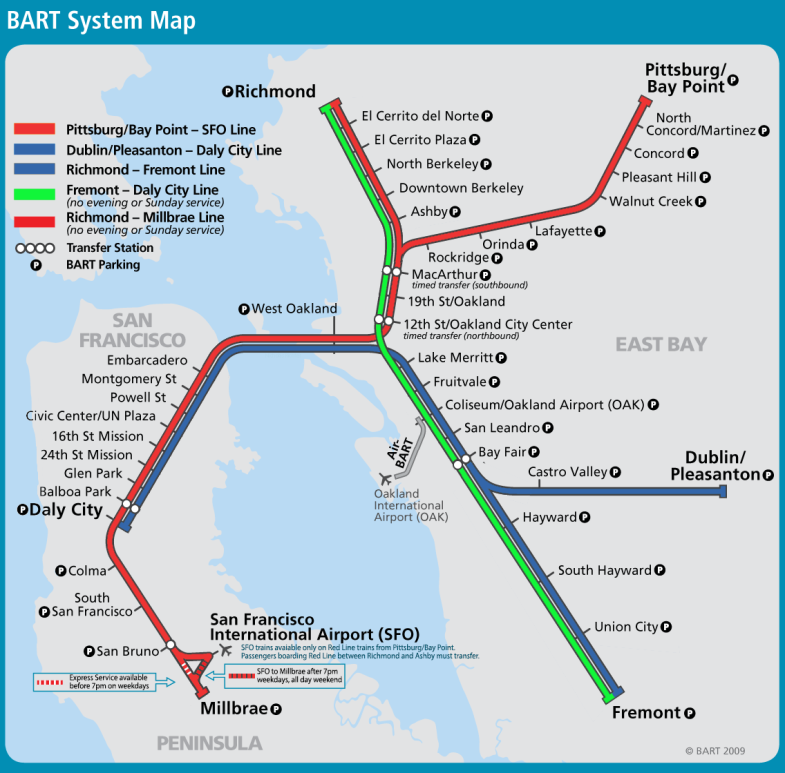BART Trip Planner offers a streamlined approach to navigating the Bay Area Rapid Transit system. This guide delves into the design, functionality, and future potential of a user-friendly BART trip planner, exploring aspects from intuitive interface design to sophisticated route optimization algorithms. We will examine the key features, data integration strategies, and error handling mechanisms that contribute to a seamless user experience.
This exploration encompasses considerations for accessibility, real-time data integration, and potential integrations with other transportation services. The goal is to provide a comprehensive overview of how a well-designed BART Trip Planner can significantly improve the commuting experience for Bay Area residents and visitors alike.
Bart Trip Planner
This document details the design considerations for a user-friendly BART trip planner, focusing on interface design, visual elements, and user experience flow. The goal is to create a mobile-responsive application that provides efficient and intuitive trip planning for both novice and experienced BART users.
User Interface Design
A well-designed user interface is crucial for a successful BART trip planner. The design should prioritize ease of use and accessibility across various devices. Mobile responsiveness is paramount, ensuring a consistent and enjoyable experience on smartphones and tablets. Navigation should be intuitive, allowing users to easily access different functionalities. Input fields need to be clear and unambiguous, minimizing user errors. Seamless integration with a map is essential for visualizing routes and stations.
| Origin | Destination | Date/Time | Map |
|---|---|---|---|
| Interactive map displaying BART lines, stations, and selected route. Zoom and pan functionality included. |
The layout utilizes a four-column responsive design, adapting to different screen sizes. The table above illustrates key interface elements. The origin and destination fields utilize auto-suggest functionality to assist users in selecting stations. The date and time selection is done using a standard HTML5 datetime-local input. The map is fully integrated, dynamically updating as the origin and destination are selected.
Visual Design Elements
The visual design should enhance usability and create a positive user experience. A color scheme using BART’s official colors (primarily blue and yellow, with a neutral grey for backgrounds) will maintain brand consistency and clarity. Typography should utilize a clear and legible sans-serif font such as Roboto or Open Sans for both headings and body text. Iconography should be simple, intuitive, and consistent with modern design standards. For example, a simple train icon could represent BART lines, and a pin icon could mark the selected origin and destination points. High contrast between text and background colors will ensure readability for users with visual impairments.
User Experience Flow
The user experience should be seamless and intuitive, catering to both first-time users and frequent riders. For a first-time user, a clear onboarding process might be helpful, providing a brief tutorial or tips on using the app. For frequent riders, quick access to frequently used routes and saved preferences should be prioritized. The general flow involves:
1. Input: The user enters their origin and destination, either by typing or selecting from auto-suggested options.
2. Date/Time Selection: The user selects the desired date and time of travel.
3. Route Calculation: The app calculates the optimal route using BART’s real-time data.
4. Route Display: The calculated route is displayed on the integrated map, showing stations, transfer points, and estimated travel time.
5. Details: Detailed information about the selected route, including specific train times and platform information, is provided.
6. Navigation Options: Options for sharing the route, saving it for later use, or accessing alternative routes are offered.
The entire process is designed to be quick and efficient, minimizing the number of steps required to plan a trip. Error handling is incorporated to provide helpful messages and suggestions to users in case of incorrect input or unforeseen issues.
Outcome Summary
In conclusion, a well-designed BART Trip Planner is more than just a route finder; it’s a vital tool for enhancing the efficiency and accessibility of public transportation. By carefully considering user interface design, data integration strategies, and innovative features, we can create a system that not only simplifies travel but also anticipates and addresses the needs of diverse users. The future iterations, including seamless integration with other transportation modes and services, promise an even more intuitive and comprehensive commuting experience.

